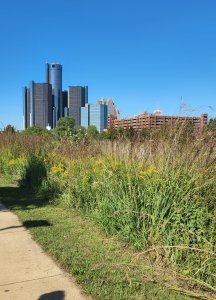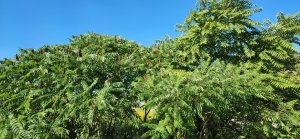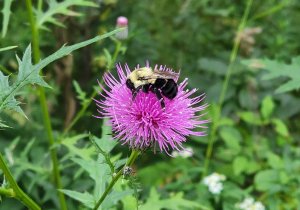Air Pollution, Ozone and the Benefits of Trees and Parks (Part 2)
July 17, 2024

By: Ali Groulx, park interpreter
There are many ways that every-day people can lend a helping hand to revitalize and repurpose spaces in our communities, not only for the Earth’s benefit, but for the people and the animals who inhabit them. The innovation that was harnessed to create the technologies Detroit is most known for, is the same energy that brings meaningful change to the neighborhoods of Southeast Michigan. Reclaiming spaces through art installations and new, native plantings of trees, grasses, and flowers allows for harmonic beauty that is unmatched by any other area in the United States. What is happening in Detroit and the surrounding areas is special, and every one of us has the opportunity to be a part of it.
Real-time data, real-time change
Like we mentioned in part one of this two-part series, the Clean Air Act of 1963 was the first federal legislation to allow the United States government to take direct action to control air pollution. This legislation enacted 60 years ago is still extremely relevant today, and it is a marker of the generational impact required to mitigate the harms of climate change. As we know, it would be impossible for the Clean Air Act to be a blanket solution – there is a great deal of nuance when it comes to what is and is not controllable. This is where innovation and creativity converge, allowing for direct community action and unique solutions.
Unique solutions can present themselves in many forms, from sculptures hosting air quality sensors, to mindful placement of pathways and vegetation to shape visitor experience. Art parks, community gardens, and green spaces have an added opportunity to include scientific gathering points – a crucial step in learning how and when pollution laws are broken. Transforming public spaces into urban and community forests allows not just for reprieve from the sun and heat but provides the setting for personal rejuvenation through connecting back to the land and the culture that surrounds us. Collective engagement at the highest level involves community members lending their voices and stories to decide how neighborhoods change, and the blueprint for the progress that can be achieved with the voices of many.

One tree, two tree, red tree, blue tree
What is better than one tree? Two trees! Even if you already have an older tree in your yard or in your community, perhaps you should plant a tree if you have an open space. You can even put it on an interactive map through the DNR! By including a variety of plants and companions in your yard, you can help fill the ecological spaces that may need attention. Looking around your neighborhood, it can be tough to determine what kinds of trees and plants you see. Luckily, technology comes in clutch – check out free smartphone apps like PictureThis for identification, or iNaturalist, where you can see what others have identified all over Southeast Michigan. Trees and plants are a shared resource, and it is beneficial to communicate with your neighbors on what may be best for the spaces you occupy.

Parks and the Metroparks
The Metroparks cares for 25,000 acres of land across 5 counties, but we know that often our parks are not the green spaces that people interact with the most daily. The Metroparks LOVES parks. City parks, state parks, small parks, big parks… you name it! It comes with being passionate about how people interact with their environment. What if you could make your backyard feel like the Metroparks? Through our free education programs, Metroparks interpreters work to help people understand Michigan’s ecological importance and their impact, be it through a guided nature walk at a park, a pop-up program at a Detroit library, or by becoming a Master Rain Gardener through the courses we offer in partnership with The Friends of the Rouge. Keep an eye on the Metroparks event calendar to find a program near you! You can be a driving force for change in your community – plant a tree or a rain garden, start a conversation with your neighbors, or just be present while enjoying the many green spaces Southeast Michigan has to offer. You may be surprised by what you learn about yourself and the people closest to you!
